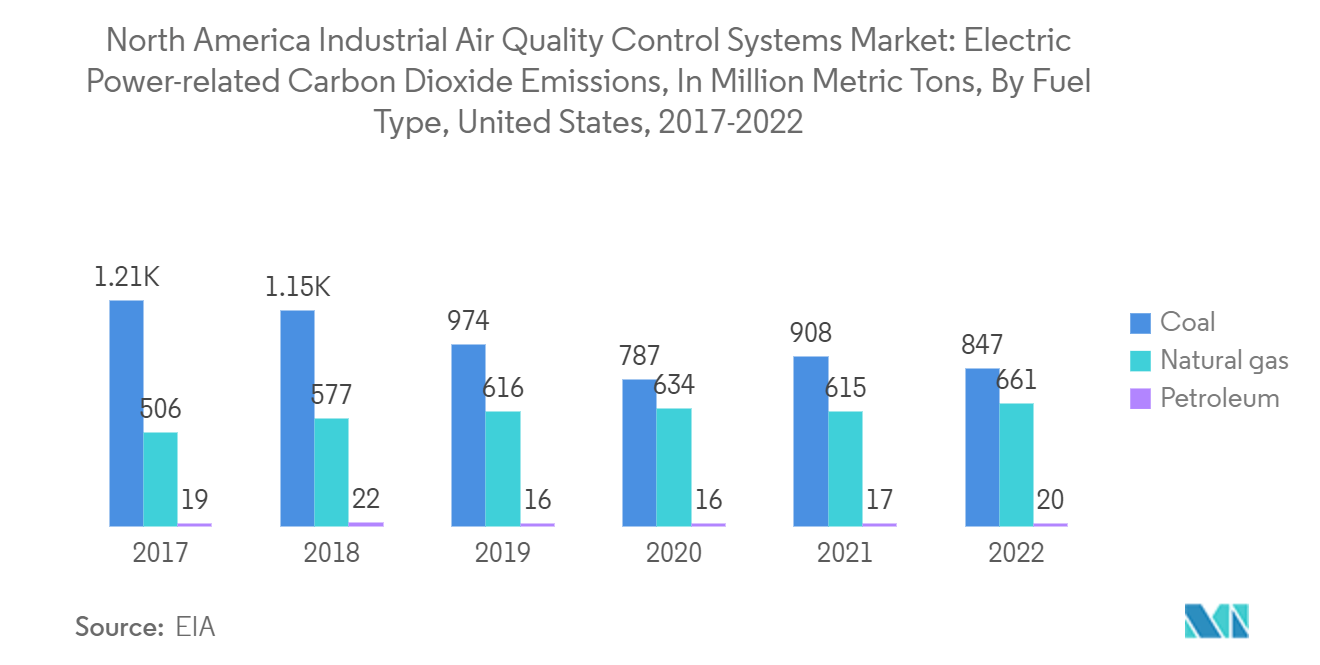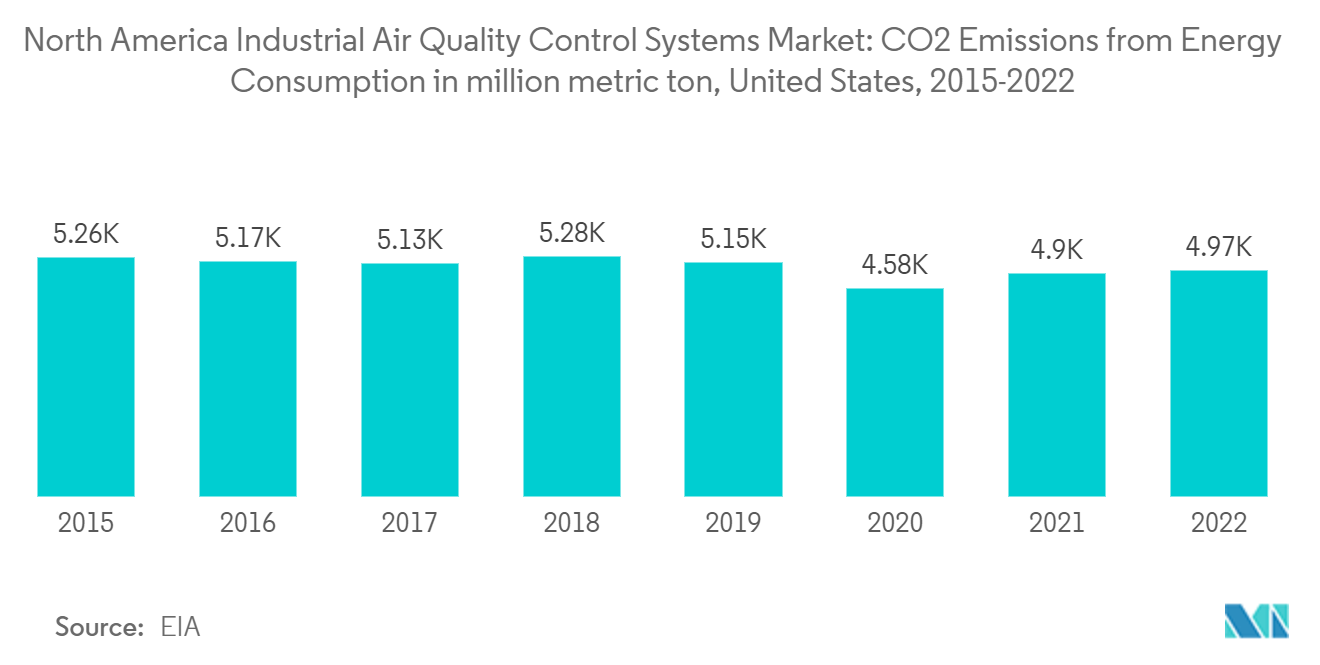Market Trends of North America Industrial Air Quality Control Systems Industry
Power Generation Industry Segment to Witness Significant Growth
- Power generation through fossil fuels is one of the significant causes of air pollution and a leading cause of global warming emissions worldwide. Power plant emissions have extensive effects and can cause long-lasting impacts like air pollution.
- Fossil fuel-based energy is released from thermal power plants that burn fossil fuels, such as natural gas or coal, to produce electricity. The burning of fossil fuels at power plants produces emissions, including nitrogen oxide (NOX), sulfur dioxide (SO2), particulate matter (PM), carbon dioxide (CO2), mercury (Hg), and other pollutants.
- In 2021, according to the United States Energy Information Administration (EIA), the power sector in the United States produced 11,539 million metric tons (MMmt) of carbon dioxide emissions. This had been the most significant annual increase in emissions since 2010. In 2022, emissions in the United States rebounded rapidly as the country looked to recover from the COVID-19 pandemic. Despite the increase in 2022, power sector emissions in the United States were still the second lowest for more than two decades and 36% lower than in 2007, when they peaked at 2.4 GtCO2.
- Coal power plants in the United States emitted 847 million metric tons of carbon dioxide (MtCO2) in 2022. Despite the increase, coal continues to be the primary source of electricity-related emissions in the United States. Coal power plant emissions declined to an all-time low of 787 MtCO2 in 2020. The decline in emissions was due to the phasing out of coal as a source of electricity generation and shifting toward natural gas electric power in the United States. The electric power industry emissions in the United States are highest in Texas for coal and natural gas.
- In 2021, Canada's power sector's carbon dioxide emissions amounted to 78.8 million metric tons (MtCO). This was increased by approximately 4.09 % compared to the previous year. Power sector emissions in Canada declined from 135.5 MtCO in 2000 to 78.8 MtCO in 2022. Since then, emissions have plunged significantly between 2000 and 2022.
- In July 2022, Canada announced the Emissions Reduction Plan 2030, an ambitious and feasible roadmap for Canada's subsequent steps for clean air and a strong economy. The plan summarizes a sector-by-sector approach for Canada to achieve its emissions reduction target of 40% by 2030 and net-zero emissions by 2050.
- Therefore, the set emission targets sector-by-sector is expected to witness significant demand for air quality control systems in the power generation industry during the forecast period.

United States to Dominate the Market
- The United States is expected to be one of the largest markets for industrial air quality control systems in North America owing to the significant greenhouse gas emissions contributions from the power generation, Industrial, and automobile sectors.
- According to the US Energy Information Administration (EIA), CO2 emissions from the energy consumption in the United States, contributed about 4,970 million metric ton of CO2 in 2022. Though there was a slight rise in CO2 emissions in 202w, the emissions have fallen significantly in recent decades as the country shifts toward cleaner energy sources and phases out coal.
- However, in 2021, more than 90% of the cities in the United States could not get below the WHO annual 5 μg/m³ guideline for PM2.5 levels, with those cities accounting for more than 98% of the region's population. The primary sources of pollution were gas and diesel-powered transportation, coal-based energy generation industrial emissions, and wildfires.
- In addition to power generation, the adoption of industrial air quality control systems is expected to come from the rapid growth in the automobile, oil and gas, steel, cement manufacturing, and chemical sector during the forecast period.
- The United States is witnessing the strongest developments in the automobile industry in recent years. The country has one of the largest automotive markets in the world. According to the US Bureau of Economic Analysis, the total vehicle sales in the United States in November 2022 was more than 14.6 million units, recording about an 8% rise from the same month of 2021. Overall, the United States is the world's second-largest vehicle sales and production market after China. Further, the country is likely to witness massive investments in the automotive sector, which will likely increase the growth of the industrial air quality control systems market in the future.
- Therefore, with increasing investments across the industries in the United States is expected to dominate the industrial air quality control systems market during the forecast period.


